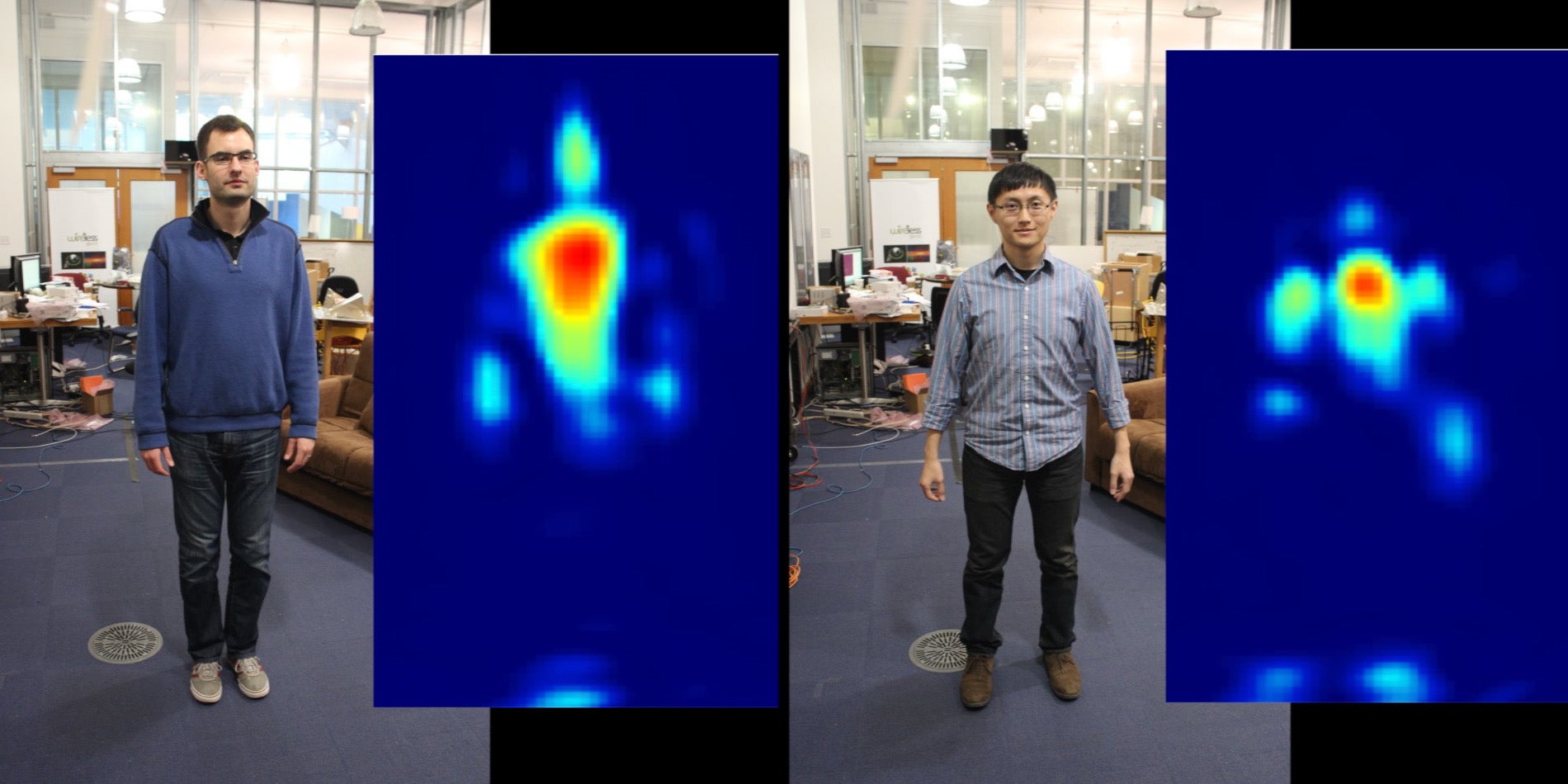Wifi Networks Can Now Identify Who You Are Through Walls (+Video)
Jamie Condliffe | October 28, 2015
The team from MIT’s Computer Science and Artificial Intelligence Lab are no strangers to using wireless signals to see what’s happening on the other side of a wall. In 2013, they showed off software that could use variations in wifi signal to detect the presence of human motion from the other side of a wall.
 |
| Source: http://gizmodo.com/wifi-networks-can-now-identify-who-you-are-through-wall-1738998333 |
<more at http://gizmodo.com/wifi-networks-can-now-identify-who-you-are-through-wall-1738998333; related links: http://www.theverge.com/2015/10/28/9625636/rf-capture-mit-wifi-tracking-surveillance-technology (MIT researchers used Wi-Fi to recognize people through walls. It can also distinguish you from other people. October 28, 2015) and http://people.csail.mit.edu/fadel/papers/wivi-paper.pdf (See Through Walls with Wi-Fi! Fadel Adib and Dina Kitabi. [Abstract: Wi-Fi signals are typically information carriers between a transmitter and a receiver. In this paper, we show that Wi-Fi can also
extend our senses, enabling us to see moving objects through walls and behind closed doors. In particular, we can use such signals to identify the number of people in a closed room and their relative locations. We can also identify simple gestures made behind a wall, and combine a sequence of gestures to communicate messages to a wireless receiver without carrying any transmitting device. The paper introduces two main innovations. First, it shows how one can use MIMO interference nulling to eliminate reflections off static objects and focus the receiver on a moving target. Second, it shows how one can track a human by treating the motion of a human body as an antenna array and tracking the resulting RF beam. We demonstrate the validity of our design by building it into USRP software radios and testing it in office buildings.]>

No comments:
Post a Comment